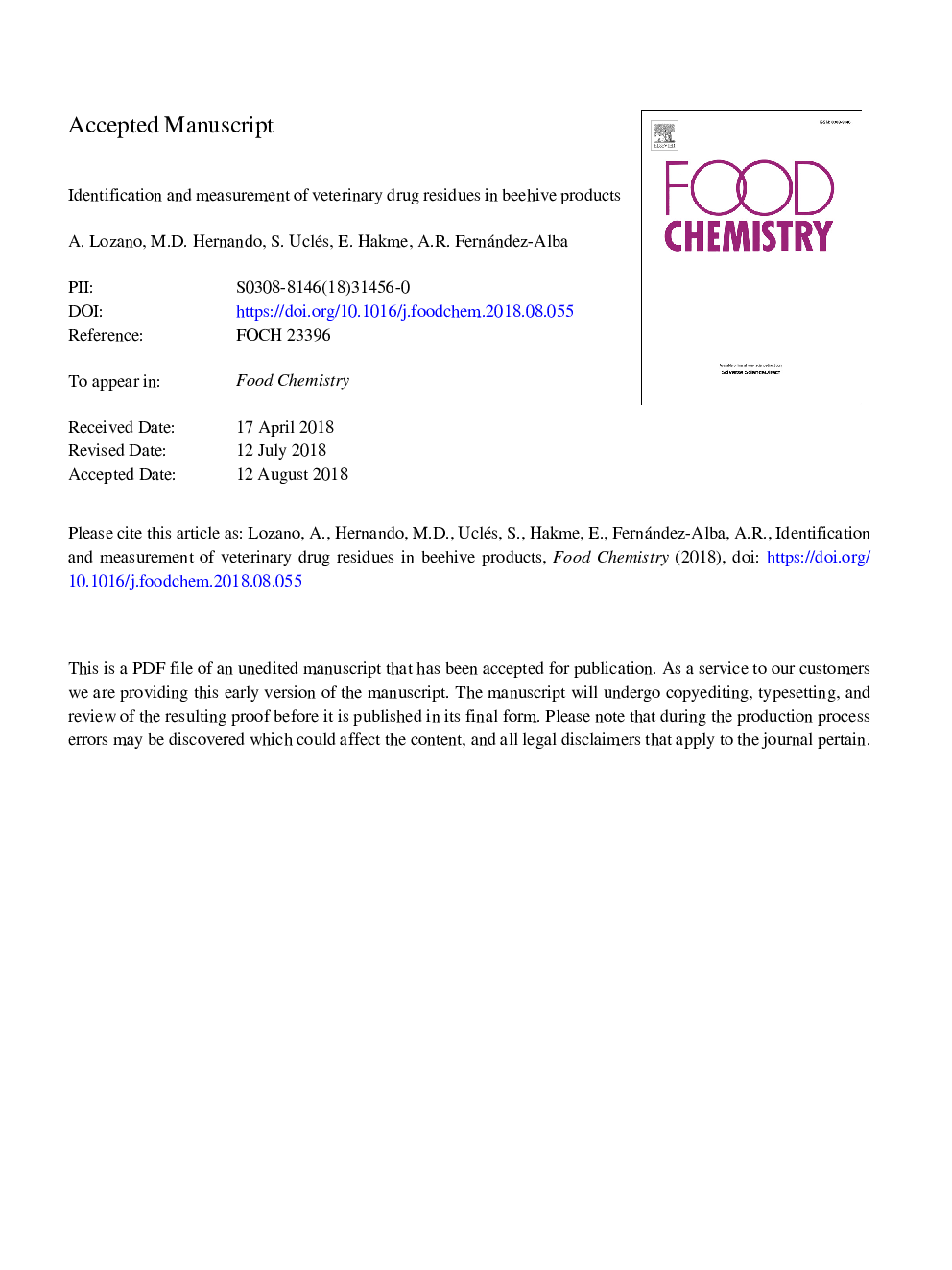| Article ID | Journal | Published Year | Pages | File Type |
|---|---|---|---|---|
| 8954817 | Food Chemistry | 2019 | 28 Pages |
Abstract
There is an increasing concern about the negative impacts of veterinary drugs in beehive compartments. This study evaluates the presence and distribution of chemical residues in beeswax, bee bread and honey and determinates in what extension honeybees are exposed to them. Samples were analyzed by LC-MS/MS and GC-MS/MS with a wide scope of 322 chemical residues. Samples were collected from apiaries located in rural and forest areas, showing no difference in contamination of phytosanitary applications. Residues of acaricides used for sanitary treatments, coumaphos and two transformation products of amitraz (DMF and DMPF), were quantified at higher levels in wax and bee bread than in honey in most cases. Coumaphos, DMF and DMPF were detected in honey in the range 6-36â¯Âµg.kgâ1; 45-541â¯Âµg.kgâ1; 15-107â¯Âµg.kgâ1, respectively. All, except one sample, were below the EU MRLs, 396/2005 Regulation. Other pesticide residues were detected in beeswax and bee bread at various levels.
Keywords
Related Topics
Physical Sciences and Engineering
Chemistry
Analytical Chemistry
Authors
A. Lozano, M.D. Hernando, S. Uclés, E. Hakme, A.R. Fernández-Alba,
